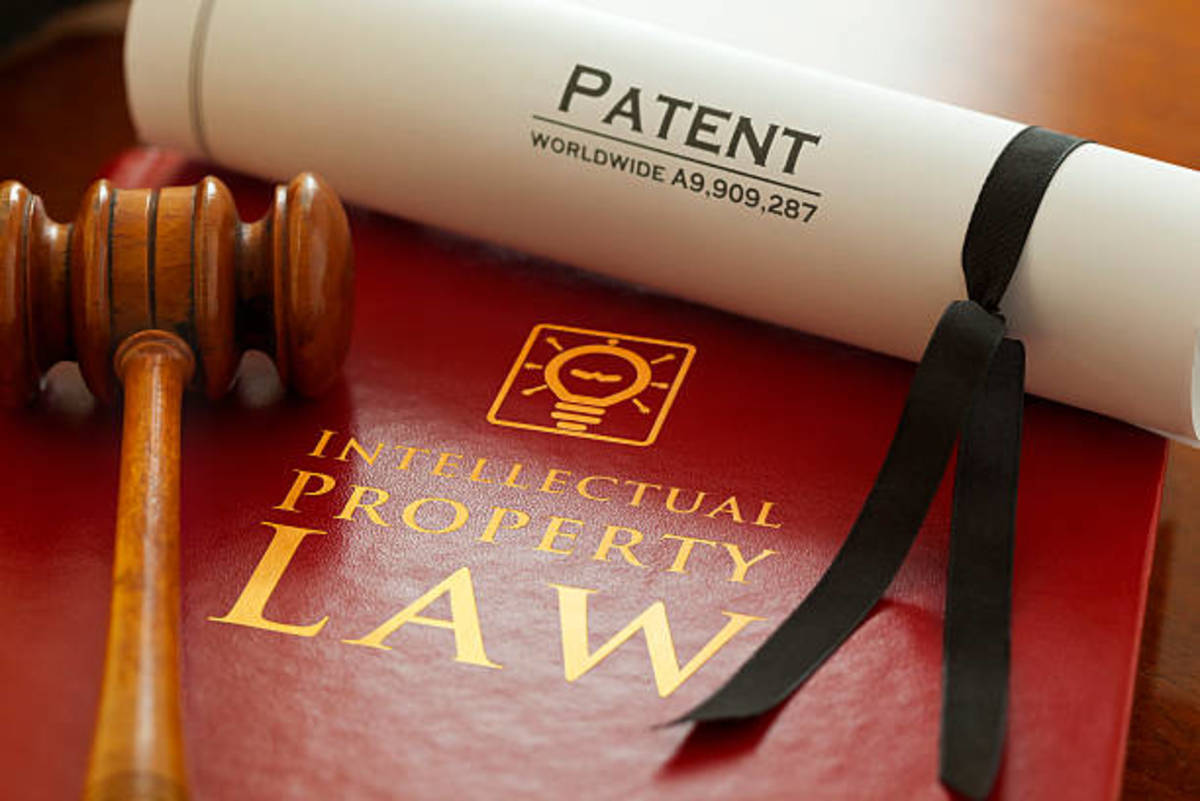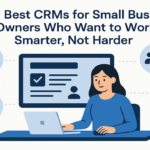The patent application process can be intimidating. In this article, we will cover how patents work, why you should patent an idea, and the benefits and drawbacks of the patent process.
A patent protects an idea and makes you the sole owner. It covers the concept’s originality. Consider this scenario: you have a million-dollar idea. You know, someone who has the potential to change the world. What would you do in this situation? Put it on Shopify and start selling it as soon as possible? You want to hide all evidence in the woods behind your house, don’t you? You may want to patent your intellectual property in the United States to protect it.
Likewise, you will often listen that you can not patent an idea, but an invention can. Do I have an idea or an invention? In reality, most ideas qualify as inventions. So what? If your idea has structure, it is probably an invention and not just a simple idea. In general, if you can draw diagrams of your invention, explain how it works, or build a prototype, you have a patentable invention.
When people ask us to research and patent their ideas, they usually mean an invention. We will now use the idea and invention of the term interchangeably. That’s it. First, consider the criteria for patenting your idea. You can patent your idea if it meets these criteria. We will elaborate on both.
It’s always good to know the criteria for patenting and the patent process. So that, when you hire a patent attorney, you get the most for your time and money.
What is a Patent?
Inventive property such as patents is protected by intellectual property rights, which are types of property rights. Your idea is protected by what is known as an “intellectual property right,” which means it is legally protected (IPR).
Intellectual property is a branch of law that deals with the ownership of ideas and is a subfield of intellectual property law. Intellectual property, such as patents, is one type of intellectual property. Trademarks, copyrights, and trade secrets are all forms of intellectual property, and they are similar to patents.
A patent protects your exclusive right to prevent others from making, using, selling, or importing anything covered by the patent. Patent protection means that you will have complete control over your revolutionary idea and will be able to exclude competitors from the market. USPTO issues patents.
What are the types of patents?
Fundamental patents are classified into three categories by the United States Patent and Trademark Office:
1. A plant patent
It is granted for a “new and distinct asexually reproduced plant that has been invented or discovered.”
2. Patents for utility
Inventions are the most common type of patent, accounting for approximately 90 percent of all patents. USPTO says a utility patent is issued for a “new and useful process,” “machine,” “manufacture,” “material,” or “new and useful improvement.” Utility patents protect the patent holder’s rights for a period of up to twenty years from the date of the patent application filing.
3. A design patent
It is granted for a “new, original, and ornamental design embodied in or applied to an article of manufacture.” that is “new, original, and ornamental in nature. In general, a utility patent protects how a product is used and functions. In contrast, a design patent protects the way a product appears.
How to patent an idea worldwide?
The Process of Getting a Patent for an Idea includes:
- Keeping track of how you came up with the idea and your progress through the process is essential.
- Research your idea to ensure that it is patentable under the existing laws governing intellectual property rights.
- When you file a patent application, you should create a prototype of your invention.
- Prepare your patent application and become familiar with the costs, patent types, and possible provisional patent applications.
- The fifth step is to submit your patent to obtain the actual patent to protect your invention or design.
How to file a patent application?
Always ensure keeping a record of how you came up with the idea and how it has developed. The following steps include the process of filing a patent application.
- A well-kept record will show that the work you put into the idea was entirely your own, and it may even help you in the future.
- Fill out the form entirely and include all the work you’ve done, including any corrections, improvements, and mistakes that occurred before you began the process of filing for a patent. You should also think about signing and dating each entry and having two trustworthy witnesses sign the document.
- However, it is critical to keep meticulous records of exactly who has been granted access to your idea throughout the process. Ensure to obtain non-disclosure agreements (NDAs) from all of your employees, contractors, and anyone else who has access to your confidential information.
- Your NDAs should always state that you own all intellectual property rights in your idea and any work done on it (by employees, contractors, or others). A patent attorney can help you prepare non-disclosure agreements (NDAs) for your inventions and patentable ideas.
- Examine your concept to determine whether it qualifies for patent protection under existing patent law.
- Investigate your concept and ensure that it is eligible for patent protection under current patent law before proceeding.
As previously discussed, you can patent inventions, designs, and even some plants if your invention meets the following criteria:
- It is important to note that abstract concepts and natural phenomena cannot be protected by patents.
- A USPTO patent search should be included in your research to ensure that your invention, design, or idea has not been granted or is still pending.
- Looking at international patents from other countries and reviewing relevant scientific and technical journals may also be beneficial. More specifics can be found in this beginner’s guide to patent searching, which can be found here.
- Make sure your idea will generate enough revenue to justify the time and expense of developing it into a patentable invention or design.
- Your market research will look into existing products that perform similar functions as your invention, as well as potential competitors.
Following are the points you should keep in mind:
First Note: Have you ever heard of this concept or something similar to it?
Not obvious: Is it something that others would not immediately think of?
Practical: Is it possible to put the idea into practice?
When you file a patent application, you should create a prototype of your invention.
To successfully file for a patent, you should have a working prototype of your invention. A model or prototype of your invention brings all the features described in your inventor’s journal to vivid life on a flat surface. You will have something tangible to show potential investors and licensees, as well as something to show yourself off with.
Most importantly, you may discover flaws in your design during the prototype development process that need to be corrected before applying for a patent. During the prototype development process, features of your invention’s design may be revealed that are patentable in themselves.
Although your prototype may be as simple as a diagram or drawing, creating an actual working model, if at all possible, is the most effective method of demonstrating your concept.
Listed below are some general guidelines for developing a prototype:
- Begin with a sketch or drawing. In your inventor’s journal, make a rough sketch of your invention.
- Create a mock-up in the form of a 3-D model to demonstrate your concept.
- Finally, construct a completely functional model. If a physical prototype is prohibitively expensive in real life, consider creating a virtual (computer rendered) prototype.
- Prepare your patent application and learn about the costs, patent types, and possible provisional patents that may be available.
- Suppose you have completed the steps outlined above. In that case, it is now time to prepare and file your patent application with the appropriate authorities.
The following are the most critical issues that you will need to address during the patent filing process:
A provisional patent application typically includes a specification. Still, it does not need to have a formal patent claim, oath or declaration, or information disclosure statement, as long as the specification is included.
It must be followed up with filing a non-provisional patent application within 12 months of the provisional patent application. Micro-entities are charged a $65 application fee. Small businesses are set $130, and large companies are charged $260 for a provisional patent application.
Expenses: The actual patent application process itself can be pretty costly. Depending on the complexity of the application, filing for a patent can vary in cost.
It ranges anywhere between from $5,000 to $7,000 for a simple application and upwards of $16,000 for something more complicated, such as a software patent, in some cases. Startups may be required to find investors or take out loans to fund their patent applications.
According to the previous discussion, there are three types of patents: utility patents, design patents, and plant-patent combinations (or combinations of these). You will need to determine the appropriate patent type for your idea. Still, a utility patent will be the best option in most cases.
If you are considering to file a provisional patent application before filing a non-provisional patent application for your patent, you should file the provisional patent application first to avoid any delays.
A provisional patent application involves a document filed with the United States Patent and Trademark Office (USPTO) that allows for the filing of a non-provisional utility patent at an earlier date than would otherwise be possible.
It also grants the applicant “patent pending” status and the right to refer to the invention as “Patent Pending” in patent documents.
In order to obtain the actual patent that will protect your invention or design, you must first file a patent application with the appropriate government agency. Rather than a provisional application, non-provisional applications (RPAs) are filed to obtain the actual patent that protects your invention or design. When applying for a patent, the application must include words and illustrations that demonstrate:
USPTO recommends using a Registered Attorney or Agent to file your patent application. Filing can be completed electronically, through the mail, or by hand delivery in some cases.
Most applicants file electronically, saving them a significant “non-electronic filing fee,” typically $400. It is essential to note that all attachments must be in the.pdf format and must be formatted following the specific guidelines provided.
First-time filers will begin by requesting a Customer Number (which will be used to keep track of their filings and correspondence) and a Digital Certificate (for security purposes).
Your patent application will contain several statements and attachments, including the following:
- You must prepare drawings that depict every feature of the claims. Online searches will typically turn up prices ranging from $75 to $150 per drawing sheet for the services of someone who will prepare the drawings for you. Materials, size, form, symbols, sharing, paper size, margins, color, font, and other factors are all strictly regulated in patent drawings.
- Also required will be a signed and notarized oath from the inventor stating that the inventor believes to be the original inventor of the invention, which must be included with the application. The affirmations can be found at the following link
- Following receipt of your authorization code and reference number via mail or phone, here are detailed instructions on how to complete your patent application using the USPTO’s Electronic Filing System (EFS):
- Make and use the invention and demonstrate how to do so.
- Give an example of how the invention is distinct from all other inventions.
- Clearly describe the aspects of the invention that a patent should protect.
- You can also complete the Digital Certificate and mail it to Mail Stop EBC Customer Number, Commissioner for Patents, P.O. Box 1450, Washington, DC 20005.
The narrative section of the application is a specification attachment attached. It should include the following items:
- The invention is described in detail.
- There was prior art.
- A description of the motivation or purpose behind the invention.
- An explanation of the invention includes information on how it is constructed, what materials it is made of, and how it functions.
A written claim that complies with the following stringent requirements:
- There should be no quotation marks or parentheses between the sentences; instead, the claim should be written in sentence fragments that begin with a capital letter and end with a single period.
- A statement of the independent claim provides a more in-depth description of the claim.
- Dependent claims follow an independent share and contain descriptive remarks and drawings of the invention broken down into single parts.
- Oath of utility, patent design, patent oath of plant, patent log in to the electronic patent system (EFS).
- You will need to upload your digital certificate and enter your password when you apply for the certificate.
- Complete the bibliographic information.
- The name of the invention.
- Name and mailing address.
- The customer’s identification number.
- Prepared.pdf documents should be attached, with each document’s category and description entered separately.
- Calculate the filing fee by selecting the appropriate checkboxes on the calculation tool.
- Examine each of the attachments and the application form, and then submit it.
Pay with a credit card, the amount of your USPTO deposit, or an electronic funds transfer (EFT). If you decide to pay later, you must make your payment by midnight EST on the day of filing to avoid incurring additional fees.
How to follow your patent application?
Once you have filed your patent application, the United States patent and trademark office (USPTO) will begin its review process, including a thorough patent search. After that, you will receive a patentability opinion, referred to as an “Office Action.”
In the vast majority of cases, the office action will indicate that the patent has been denied, which will result in one or more rounds of responses from both you and the USPTO. Your patent attorney can file an appeal with the court explaining why your idea is patentable, or you can amend your application.
Getting a final office action means that the patent examiner disagrees with your response. You have the option of filing a second response and a request for continued examination to resolve the disagreement. If all of your responses are positive, the USPTO will issue a “Notice of Allowance” after paying the required Issue Fee. After paying the Issue Fee, you can expect to receive your patent in approximately one to three months after making the payment.
Generally, it takes one to three years, from the time you file for a patent to the time you receive your patent. A patent, however, protects your invention or design for between 14 and 20 years, depending on the type of patent granted.
After receiving the patent, always remember that the inventor is responsible for enforcing the patent once issued. You may want to think of staying away from Patent Promoter Scams and Invention Promotion Corporations.
You can accomplish this by:
- Searching the Federal Trade Commission’s website for the term “invention” brings up a list of companies that got investigated and/or penalized for invention-related wrongdoing.
- Check the Better Business Bureau (BBB) for the potential promotion firm.
- Make an appointment with your patent attorney.
- Inquire with your invention promotion firm about specific details, such as:
The promoter has evaluated how many inventions in the last five years and how many have been positive or negative. The number of customers who have entered into a contract with the promoter in the previous five years
The total number of customers who have been identified as making a profit from their services
Thousands of customers have received license agreements for their inventions due to their services. The promoter and its officers have past affiliations with prior invention promotion companies, including names and addresses.
Why hire an experienced patent lawyer?
At this point, you should consider hiring a patent lawyer.
But a patent lawyer does more. An experienced patent lawyer will craft strong language and claims that fully protect your invention to protect your million-dollar idea and grant you a monopoly.
For example, making a prototype of a particular type of plastic could be patentable. Although you could technically use a different kind of plastic to manufacture the item, the USPTO may only let you patent items made with that specific plastic.
You would be unprotected if someone made the same item with a different plastic. The specifics of a patent application can limit what you can patent. Still, you can patent practically anything as new and not evident by layering enough specific parts together.
Your patent’s most critical question is based on the claims you are likely to receive, can you stop your competitors from making, using, selling, or importing your invention? A strong patent with factual claims is required for a true monopoly. It gives you the right to proudly and solely own your idea.
Patent lawyers are experts who know how to increase an invention’s protection while still getting it approved by the USPTO.
A patent lawyer also helps you draft a patent application. They also:
- Assess the item’s novelty, non-obviousness, and utility.
- Prepare and file all application documents (descriptions, claims, drawings, etc.)
- Conduct patent research in the U.S. and abroad to avoid infringement.
- Obtain a regular or provisional patent.
- Pay the patent application fees.
- Defend your patent application during the examination.
Even if you only want to file a provisional patent, you must be very specific about making and using your idea. Creating a provisional patent application can take hundreds of hours of research, patent searching, reading, writing, and drawing per application. You must also complete this process and file your non-provisional patent within 12 months. This is required for a provisional patent, usually under ten pages long and written informally.
If you’re going to write your patent, at the very least, have a patent lawyer look it over. Although cheaper, you are writing it yourself takes a lot more time. You can always ask the patent lawyer for a cap if you’re worried about costs.
It is also imperative to distinguish between a patent agent and a patent attorney. Patent agents cannot represent parties in litigation or engage in legal practice. They can prepare and apply, respond to USPTO examiners’ letters, and help with revisions. However, patent agents cannot advise on the legal implications of invention ownership (ex: divorces or making a will).
Post your job on Counsel’s marketplace to protect your million-dollar inventions from being copied. UpCounsel only accepts the top 5% of lawyers. UpCounsel lawyers have an average of 14 years of legal experience, including work with or on behalf of Google, Menlo Ventures, and Airbnb.
Can you patent an idea?
In a technical sense, no. Patents cannot be granted solely based on ideas. You can only patent an idea for an invention that has been developed from a picture. The invention must include a description of the invention with your patent application to be granted protection.
To be successful in your patent application, you must do the following:
- Be the one who came up with the idea, or another person may have assigned you the invention, or you may have invented it yourself.
- To act as an inventor’s legal representative (administrator or executor);
- Be a co-inventor (by putting in more effort than money) and file a patent application as joint inventors; and
- It is impossible to transfer a patent unless it is received as an inheritance or legacy. This means that you cannot work for the United States Patent and Trademark Office.
How to patent an idea for a business?
Before filing for a patent, make sure your idea meets the definitions and requirements for a patent and that no other patents have been filed.
You must disclose the invention’s nature and a detailed written description at the time of application. Drawings or renderings may also be required. Patents are filed with the USPTO.
Legal Aid
Ask them to sign an agreement called the non-disclosure agreement to keep business secrets private if you work with others. Non-disclosure agreements guard an idea from associates or coworkers.
Also, many investors are reluctant to sign non-disclose agreements before discussing an idea. The same goes for clients, but you can reassure them by including a confidential agreement with your business plan rather than asking for it upfront. No-expiration agreements are more powerful.
Non-competitive Deals
When you hire help, a non-competitive agreement is required. These document prevent companies or individuals from working with a competitor. When hiring a helper, state that you own any improvements made to the original idea; this means you own any ideas an employee or assistant creates. Still, they must be listed as a collaborator on your patent. But they don’t own the invention.
Mark all your work as “Confidential” so you can claim it. A stamp also prevents others from physically copying your documents, like an idea summary or business plan.
Patents and Trademarks to Help
Provisional patents offer additional protection. A provisional patent protects an idea for up to 12 months (patent pending). Fill out a provisional patent application to file. You can do this online or with Patent Wizard’s help. Provisional patents are cheaper and faster than other patents.
Defendant
It may seem counterproductive to form alliances with competitors, but there are several advantages:
Competitors will be less inclined to cheat you if they benefit from your business ventures. Nobody sees you as a primary threat. Partnerships deter competitors from copying your ideas. You can also learn from more experienced competitors and better grasp your market.
How to patent an idea for an app?
To patent an app concept, you must first locate a patent attorney. The attorney assists you in doing paperwork and drafting a patent application, which will then be filed with the by USPTO.
The USPTO is responsible for patent issuance and trademark registration. The following information will be included in the patent application:
- The conceit
- The location of the concept
- The method by which the idea will be realized
The conceit is as follows:
An app idea is a concept that can solve a problem in the future. An example is what Zillow does with real estate data, which is widely used.
The location is as follows:
Knowing the general location of an idea is usually less difficult to determine than knowing the precise physical location of the idea.
Here’s how it works:
Real estate data can be analyzed using this method to determine how the vacancy rate is performing in a given market. Real estate data includes information about the market, such as total sales, total income, taxes, and the property’s value, among other things. Various investment websites provide access to this type of real estate information. Using real estate websites such as Zillow and Redfin, an investor can look up the value of a property and obtain information about the current market value of the real estate in that area.
The following are two examples of real estate data found on real estate websites:
- It is based on the median sales price in the area to calculate the local Zillow value or Z estimate.
- The Redfin value or Z estimate for the area is based on the median sales price.
- The patented app concept ensures that you can pinpoint the location of the problem, for example, your findings and important outcomes. Particular insights or discoveries made due to the app concept are considered critical discoveries.
- These are characteristics that an app should have to differentiate itself from conventional solutions in the future. Investors may want to consider the find-out elements to rank traditional real estate companies.
Suppose someone searching from New York looked up Redfin values in New York. This reveals that Redfin can provide a more targeted real estate solution to that person in the specific geographic location where they are searching for real estate.
How much does it cost you to patent an idea?
The cost of your invention varies significantly depending on the specifics of the invention. In addition, the amount you pay will vary depending on how much assistance you receive in preparing the application.
To maintain the protection of your idea, the filing of application takes three mandatory fees:
Fees for Filing
A non-refundable fee must be paid regardless of whether protection is granted. In the case of an application filed electronically, the basic filing fee is $300.00. Any exceptional circumstances or considerations will result in a significant increase in the cost.
Fees for searching and examining
To verify the validity of an application, the United States Patent and Trademark Office (USPTO) must conduct research.
The minimum search and examination fees for the utility application is about $660.00 for the search and $760.00 for the examination. The minimum search fee is $660.00.
Fees for routine maintenance
USPTO charges maintenance fees after the first issue of protection for 3.5, 7.5, and 11.5 years. At each interval, the maintenance fees become progressively more expensive. $3,600 over 3.5 years After 7.5 years, the cost is $3,600. After 11.5 years, the final payment is $7,400.
Conclusion
To recapitulate, always remember that if your product is a high demand product in the market, it’s worth patenting your idea. When it comes to patenting your invention, it’s probably not the best choice if you want to show off or gain some social proof for your brand.












